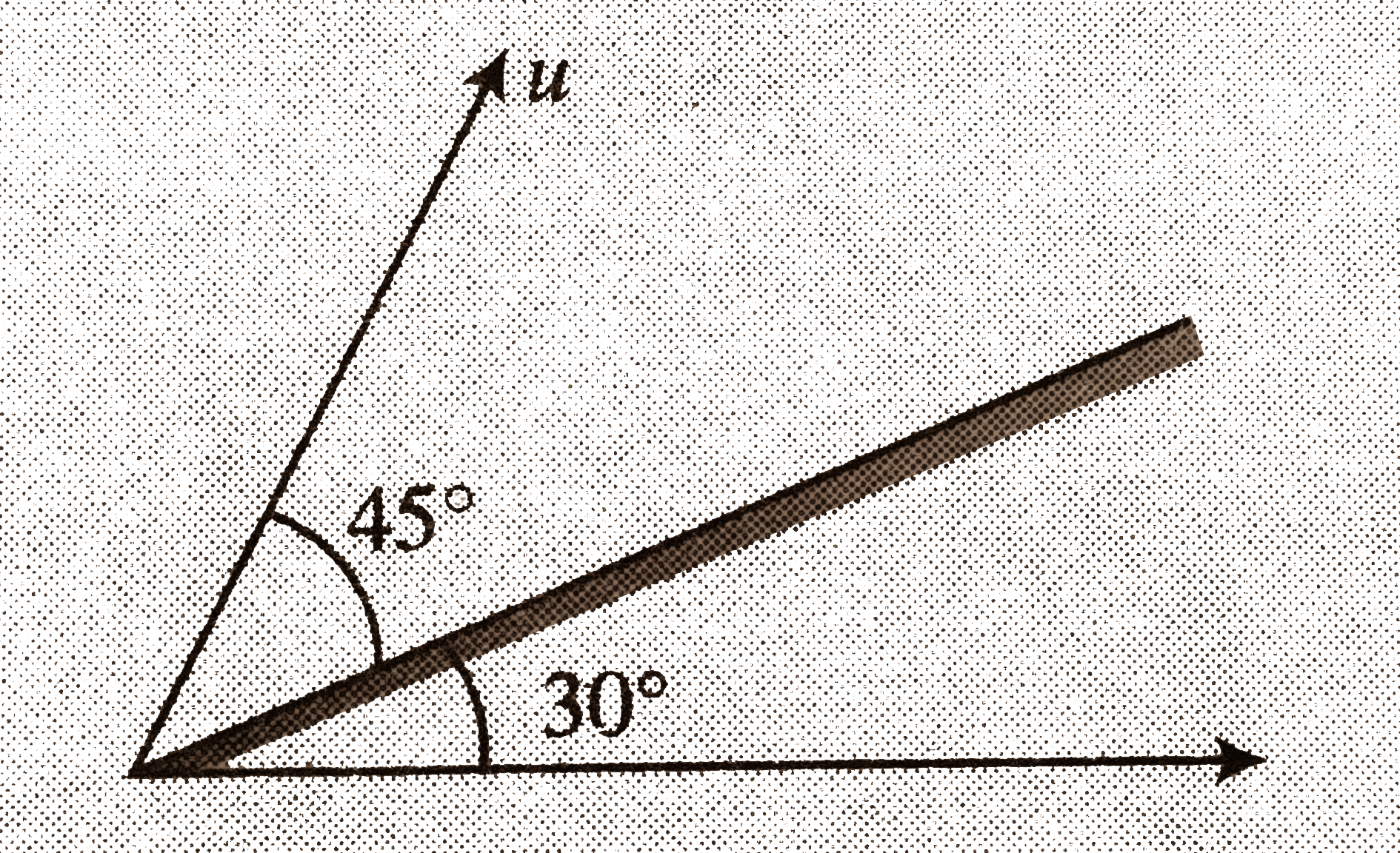Derive the expression for final speed of a particle moving in an inclined plane.
(i) Let us assume a round object of mass m and radius R is rolling down an inclined plane without slipping as shown in Figure. There are two forces acting on the object along the inclined plane.
(ii) One is the component of gravitational force (mgsinθ) and the other is the static frictional force (f). The other component of gravitation force (mgcosθ) is cancelled by the normal force (N) exerted by the plane. As the motion is happening along the incline, we shall write the equation for motion from the the free body diagram (FBP) of the object.

(iii) For translational motion, mgsinθ is the supporting force and f is the opposing force,
mgsinθ−f=ma
For rotational motion, let us take the torque with respect to the center of the object. Then mgsinθ cannot cause torque as it passes through it but the frictional force f can set torque of Rf.
Rf=Iα
(iv) By using the relation, a=rα, and moment of inertia I=mK2, we get,
Rf=mK2aR,f=ma(K2R2)
Now equation becomes,
mgsinθ−ma(K2R2)=ma
mgsinθ=ma+ma(K2R2)
a(1+K2R2)=gsinθ
After rewriting it for acceleration, we get,
a=gsinθ(1+K2R2)
(v) We can also find the expression for final velocity of the rolling object by using third equation of motion for the inclined plane v2=u2+2as. If the body starts rolling from rest, u=0. When h is the vertical height of the incline, the length of the incline s is,
s=hsinθ
v2=2gsinθ(1+K2R2)(hsinθ)=2gh(1+K2R2)
By taking square root,
v=
⎷2gh(1+K2R2)
(vi) The time taken for rolling down the incline could also be written from first equation of motion as, v=u+at. For the object which starts rolling from rest, u=0. Then,
t=va
t=⎛⎜
⎜⎝
⎷2gh(1+K2R2)⎞⎟
⎟⎠⎛⎜
⎜⎝(1+K2R2)gsinθ⎞⎟
⎟⎠
t=
⎷2h(1+K2R2)gsin2θ
(vii) The equation suggests that for a given incline, the object with the least value of radius of gyration K will reach the bottom of the incline first.
Topper's Solved these Questions
- BOOK - SURA PUBLICATIONCHAPTER - QUARTERLY COMMON EXAMINATION - 2019EXERCISE - PART - III9videos
QUARTERLY COMMON EXAMINATION - 2019
- BOOK - SURA PUBLICATIONCHAPTER - PUBLIC EXAM QUESTION PAPER MARCH-2019EXERCISE - Part-IV10videos
PUBLIC EXAM QUESTION PAPER MARCH-2019
- BOOK - SURA PUBLICATIONCHAPTER - SURAS MODEL QUESTION PAPER -2 ( PHYSICS )EXERCISE - PART - IV10videos
SURAS MODEL QUESTION PAPER -2 ( PHYSICS )
Similar Questions
Knowledge Check
- Question 1 - Select One
A particle is projected at an angle α with the horizontal from the foot of an inclined plane making an angle β with horizontal . Which of the following expressions holds good if the particle strikes the inclined plane normally?
Acotβ=−tan(α−β)Bcotβ=2tan(α−β)Ccotα=tan(α−β)Dcotα=2tan(α−β) - Question 2 - Select One or More
Let v and a be the instantaneous velocity and acceleration of a particle moving in a plane. Then rate of change of speed dvdt of the particle is equal to
A|a|Bv.avCthe component of a parallel to vDthe component of a perpendicular to v
The acceleration of a particle performing S.H.M. at mean position is
View SolutionDerive an expression for the acceleration of a body sliding down a rough inclined plane.
View SolutionFrom an inclined plane a particleis thrown in a direction normal to the surface. Find the ratio of successive ranges of the particle on inclined plane. Consider all collisions as elastic collisions (particle rebounds with the same speed with which it strikes the plane)
View SolutionLet v and a be the instantaneous velocity and acceleration of a particle moving in a plane. Then rate of change of speed dvdt of the particle is equal to
View SolutionObtain an expression for the centripetal force F acting on a particle of mass m moving with velocity v in a circle of radius r . Take dimensionless constant K = 1 .
View SolutionA particle is projected on an inclined plane with a speed u as shown in (Fig. 5.61). Find the range of the particle on the inclined plane.
 .View Solution
.View Solution
